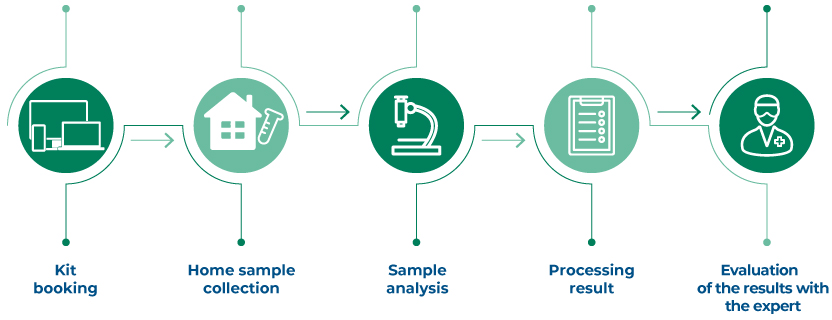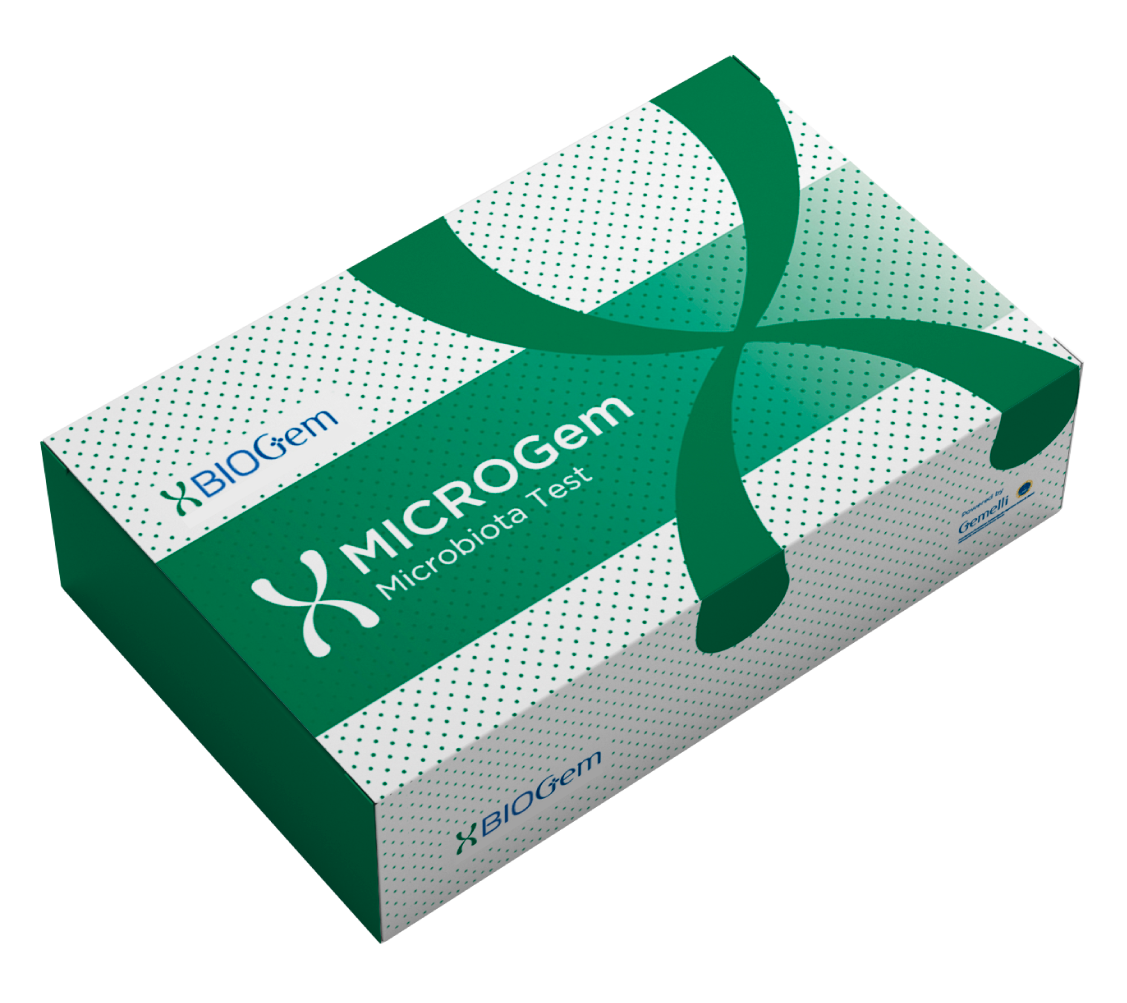XMICROGem Microbiota Test
Microbiota Test is performed using second generation sequencing techniques (NGS) through which it is possible to identify the totality of the intestinal or vaginal microbial flora, creating a real descriptive "map" of the bacteria present in the patient's sample.
Who is XMICROGem aimed at and how is it performed?
INTESTINAL MICROBIOTA TEST
Intestinal Microbiota Test is aimed at any person who wants to know the composition of their intestinal microbial community or wants to investigate the origin of certain symptoms, such as obesity and other dysfunctions concerning their gastrointestinal system. If alterations of the microbial community are found, it is possible to know the entity and the bacteria potentially responsible for these alterations.
Intestinal Microbiota Test is performed on a stool sample collected by the patient at home, using the specially provided kit.
For the reporting of the Test there are 15 to 20 working days from when the biological sample arrives at the laboratory.
VAGINAL MICROBIOTA TEST
Vaginal Microbiota Test is aimed at any woman who wants to know the composition of her vaginal microbial community, or wishes to investigate the origin of symptoms, concomitant infections, and other dysfunctions concerning her genital tract.
Vaginal Microbiota Test is performed on a sample of vaginal secretion using a swab that can be carried out directly by the patient, or by her gynecologist, in both cases using the specially provided kit.
For the reporting of the Test there are 20 working days from when the biological sample arrives at the laboratory.
To book XMICROGem just send an e-mail to customerservice@xbiogem.it
What does it analyze
The composition of the microbiota, i.e. the list of bacteria living in the intestine, classified at different taxonomic levels, is defined by amplification of the gene that codes for 16S ribosomal RNA and subsequent sequencing.
The composition of the microbiota, i.e. the list of bacteria living in the vagina, classified at different taxonomic levels, is defined by the amplification of the gene that codes for 16S ribosomal RNA and subsequent sequencing.
Molecular research of intestinal pathogens allows us to identify the presence of the following pathogenic microorganisms: Norovirus GI, Norovirus GII, Rotavirus, Adenovirus, Astrovirus, Sapovirus, Campylobacter spp., hypervirulent Clostridium difficile, Salmonella spp, Shigella spp/enteroinvasive E.coli, Vibrio spp, Yersinia enterocolitica, Aeromonas spp, E:coli O157, E:erocytotoxic E.coli, enteropathogenic E.coli, enterotoxigenic E:coli, enteroaggregative E.coli.
Through the test it is possible to evaluate in the first instance a possible infestation of intestinal parasites. Below you will find the list of parasites analyzed: Ancylostoma duodenale, Ascaris lumbricoides, Balantidium coli, Blastocystis hominis, Clonorchis sinensis/Opisthorchis spp./Metorchis spp., Cryptosporidium spp., Cyclospora cayetanensis, Cystoisospora belli, Dientamoeba fragilis, Diphhyllobothrium latum, Entamoeba histolytica, Entamoeba spp., Enterobius vermicularis, Fasciola spp., Fasciolopsis buski, Giardia intestinalis, Hymenolepis diminuta, Hymenolepis nana, Necator americanus, Schistosoma spp., Strongyloides stercoralis, Taenia spp., Trichuris spp.
The presence of the following pathogenic microorganisms: Bacterioscopic, Aerobic Common Germs, Antibiogram, Streptococcus Agalactiae, Gardnerella, Anaerobic Bacteria, Fungi (Culture and Antimycogram), Fungi [yeasts], Chlamydia Trachomatis, Genital Mycoplasmas, Trichomonas Vaginalis and Neisseriae Gonorrhoeae.
The presence of the following microorganisms: bacterioscopic, common aerobic germs, antibiogram, gonococcus, streptococcus agalactiae, gardnerella, anaerobic bacteria, fungi (culture and antimycogram), fungi [yeasts], chlamydia trachomatis, genital mycoplasmas and trichomonas vaginalis.
Through the test of coproculture it is possible to search for Salmonella, Shigella and Campylobacter, Yersinia enterocolytica (Culture) and Escherichia Coli Enteropathogens. In case of positivity, the antibiogram will be performed.
The streptococco swab is the culture test that allows you to identify pregnant women colonized by Streptococcus agalactiae.
How it works

F.A.Q. – XMICROGem Microbiota Test
For a correct interpretation of the results, it is advisable to seek advice from a specialist doctor. If you do not have a reference doctor it is possible to request an additional videoconsultation service, performed by a specialist of the Fondazione Policlinico Universitario Agostino Gemelli IRCCS, by sending an email to customerservice@xbiogem.it .
The sample, after carrying out the analysis, will be destroyed according to current legislation.
The technology used to perform the test is CE-IVD certified and uses second generation sequencing methods (NGS, on the Illumina MiSeq platform).
The price of the intestinal or vaginal Microbiota Test is equal to €190. The price of the Intestinal Pathogen Analysis is equal to €100. The price of the Intestinal Microbiota Test including pathogen analysis is equal to €250. correct interpretation of the results, it is advisable to seek advice from a specialist doctor. If you do not have a reference doctor it is possible to request an additional videoconsultation service, performed by a specialist of the Fondazione Policlinico Universitario Agostino Gemelli IRCCS, by sending an email to customerservice@xbiogem.it .
Reimbursement can be requested in the form of indirect compensation, however it is advisable to first check the reimbursement of the service with your health insurance company.
You can contact XBIOGem on +39 06 3015 8224 Monday to Thursday 8.30am to 4pm and Friday 8.30am to 2pm.
